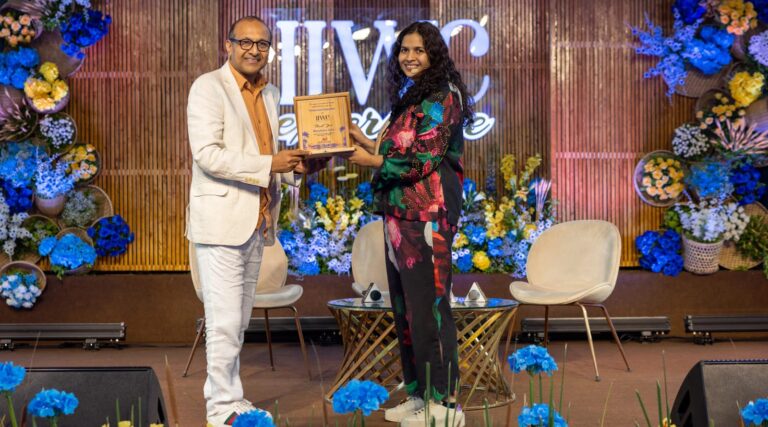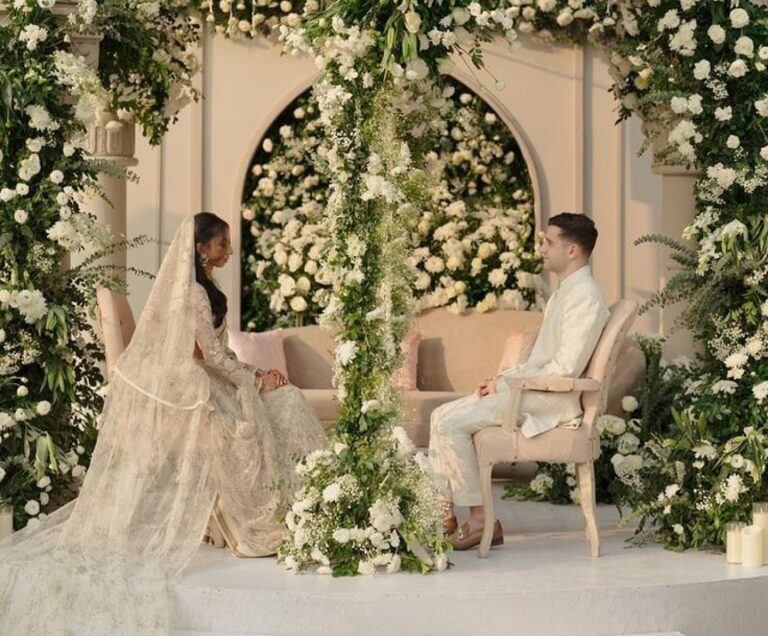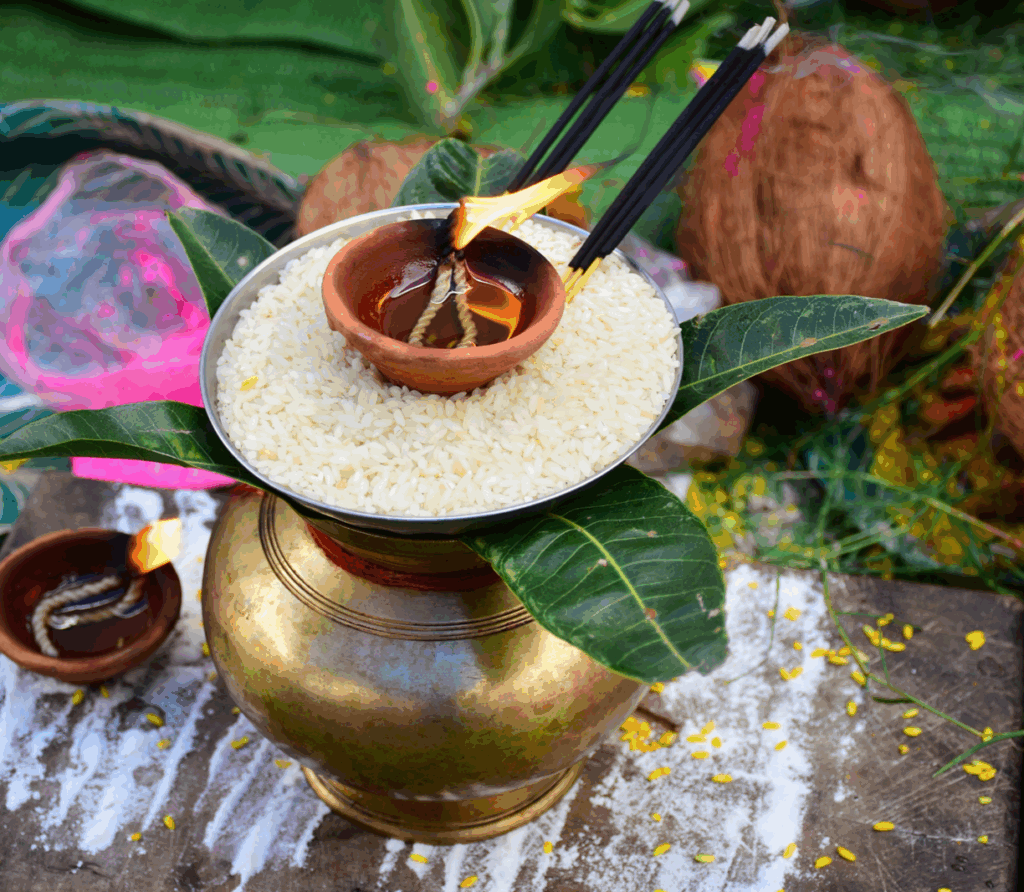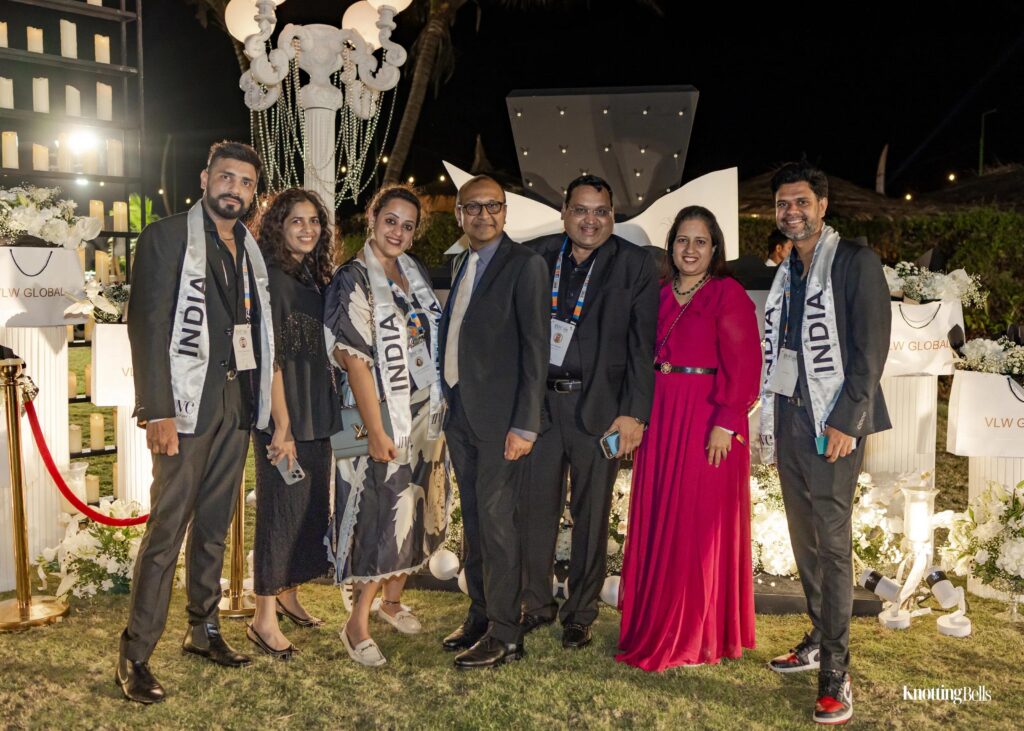Life often leads us down unexpected paths, unveiling opportunities that challenge and enrich our perspectives. When I received the invitation to be a keynote speaker at the India International Wedding Connections (IIWC) Experience in Goa, I was both honored and intrigued. This event promised not only a deep dive into the grandeur of luxury weddings but also a platform to discuss a subject close to my heart: sustainability.

The Grandeur of Indian Weddings
Indian weddings are legendary for their splendor and scale. With over 10 million ceremonies conducted annually, the Indian wedding industry stands as the second-largest in the country’s retail market, valued at a staggering ₹11 trillion (approximately $130 billion). These celebrations are not just personal milestones but also significant economic drivers, providing employment to about 10 million people across various sectors.
The allure of these weddings lies in their elaborate rituals, exquisite attire, sumptuous feasts, and lavish decorations. Families often invest their life savings to ensure that these once-in-a-lifetime events are nothing short of spectacular. However, this magnificence comes with its set of challenges, particularly concerning environmental sustainability.
The exponential growth of the wedding industry underscores the potential impact that even minor sustainable practices can have on a larger scale. A typical Indian wedding hosting 500 guests can produce over 800 kilograms of waste. This statistic is a stark reminder of the urgent need to rethink our celebration practices.

An Eye-Opening Experience
The three days I spent at this wedding conference in Goa were nothing short of transformative. It was more than a conference—it was an immersive celebration. Multiple venues were transformed into visual spectacles, each themed meticulously, echoing the magic of actual wedding ceremonies. The conference was a melting pot of ideas. It brought together the best minds in the wedding ecosystem—planners, designers, hoteliers, and experience curators from across the globe. Each session, panel discussion, and casual conversation offered a new perspective on the evolving landscape of luxury weddings. I walked into every session like a student—curious, wide-eyed, and eager to learn. But as I listened, I also grew aware. I knew my presentation couldn’t be about telling people what to do. It had to be about starting a conversation. A genuine one.
Presenting Sustainability: A New Dimension of Luxury
Standing before an audience deeply entrenched in the traditions of opulent weddings, I talked about sustainability not as a compromise but as an enhancement to luxury. I shared insights on how eco-friendly practices could coexist with grandeur, creating celebrations that are both lavish and responsible.
I believe one of the key points is the importance of having an intent and starting small. Start small. Start somewhere. But start.
Simple steps like eliminating single-use plastics, opting for digital invitations, and choosing local, organic produce for catering can significantly reduce the environmental impact. For instance, replacing plastic water bottles with reusable alternatives can drastically cut down plastic waste, considering the average Indian wedding hosts more than 300 guests. And agree or not, we tend to take a sip and leave the bottle just to pick another later. Just do a simple maths.
Even if it’s just one function in the entire wedding planned consciously, it can still create a meaningful impact. Small beginnings often lead to powerful shifts. During my talk, I introduced the idea of ‘Vriksharopan Sanskar’—a beautiful ritual of planting saplings to mark new beginnings. Just imagine: each couple planting trees as part of their ceremony, leaving behind not just memories but a living, growing legacy for the planet. After the session, I could sense a shift in the room. Conversations became bolder. People were not only acknowledging the need for change but finding ways to incorporate.

Shubh Sustainability: Making Auspicious Truly Meaningful
In India, the word “Shubh” signifies something that is pure, auspicious, and sacred. Weddings, of course, are one of the most “shubh” events in our lives. But what if we stretched that definition beyond rituals and into intention?
What if being shubh also meant being sustainable?
Think of it this way:
- Shubh Bhojan (Sacred Food): Replace imported exotic ingredients with organic, local produce. Partner with caterers who compost food waste or donate excess meals.
- Shubh Vastu (Sacred Spaces): Choose venues that use renewable energy, recycle grey water, or offer natural light and ventilation. Better still, opt for open-air venues that minimize energy usage.
- Shubh Aabhar (Sacred Gifting): Replace elaborate wedding favors with meaningful, low-impact gifts—handmade items, seed kits, local artisan products, or even donations made in guests’ names.
- Shubh Sajja (Sacred Decor): Shift from foam and thermocol to reusable fabric, metal, or cardboard-based elements. Incorporate potted plants, reduce use of cut flowers. Use lights powered by solar energy where possible.
- Shubh Yatra (Sacred Travel): Offer shared shuttles for guest travel, encourage e-cars, or even calculate your event’s carbon footprint and invest in offset programs.
This isn’t about making weddings smaller. It’s about making them smarter. Weddings are already imbued with symbolism—why not add sustainability to the sacred narrative?

The Role of the Bride and Groom: Change Starts Here
One of the most honest realisations I had during the wedding conference was this: No matter how passionate a wedding planner may be, true change only begins when the bride and groom ask for it.
Unless the couple—the very heartbeat of the celebration—values sustainability, very little can be implemented at scale. And that’s why the conversation needs to move beyond industry forums to living rooms.
- Talk about sustainability not as a “trend” but a choice of values.
- Include discussions around sustainable wedding planning during family meetings.
- Normalize opting out of unnecessary rituals or extravagance without guilt or judgement.
- Engage younger generations through platforms like Instagram Reels and Pinterest boards with sustainable inspiration.
- Encourage influencers and celebrities to showcase mindful choices during their own celebrations.
When couples ask for better, the industry will respond faster. And why wouldn’t they? It’s not just about looking good anymore. It’s about doing good—together.

Aligning with India's Carbon Neutrality Goals
India has set an ambitious target to achieve net-zero carbon emissions by 2070. While this goal encompasses various sectors, the wedding industry, given its magnitude, can play a pivotal role. By adopting sustainable practices, the industry can significantly contribute to reducing the nation’s overall carbon footprint.
The government is also facilitating this transition through initiatives like the Energy Conservation (Amendment) Act, 2022, which empowers the establishment of a domestic carbon market. Such policies indicate a conducive environment for industries to align with sustainable practices.
If an industry worth ₹11 trillion can commit to just 10% sustainability integration in the next five years, imagine the shift that would bring—not just to emissions, but to mindset.
Looking Ahead: Collaboration, Curiosity, and Commitment
The wedding world is full of creatives—dreamers who build magic from mood boards. Imagine channeling that same talent to craft something beautiful and meaningful.
This wedding conference was not just an event—it was a beginning. I met planners eager to learn, hotels experimenting with composting, designers reusing drapes with pride. There’s a new wave rising. One where luxury and legacy walk hand in hand.
I walked in as a speaker. I walked out as a student. And I truly believe—our most celebrated moments can also be our most conscious ones.

Conclusion: A Call to Action
As we stand at the crossroads of tradition and modernity, it’s imperative to reimagine our celebrations. Luxury weddings can retain their grandeur while embracing eco-conscious practices. It’s about making informed choices—selecting venues that prioritize sustainability, choosing décor that is both elegant and environmentally friendly, and being mindful of waste management.
To all stakeholders in the wedding industry—planners, designers, caterers, and, most importantly, couples—let’s embark on this journey towards sustainable celebrations. Let’s create weddings that are not only memorable for their magnificence but also for their mindfulness. After all, true luxury is in harmony with the world around us.
Together, let’s redefine what it means to have a “grand wedding.” Let’s make it shubh in every sense.
Let’s preserve our planet while celebrating our love.
Let’s build memories, not landfills.
Let’s plant stories, not just stages.
Let’s make every celebration not just a spectacle—but a statement.
Because true luxury is not in how much we spend. It’s in how much we care.